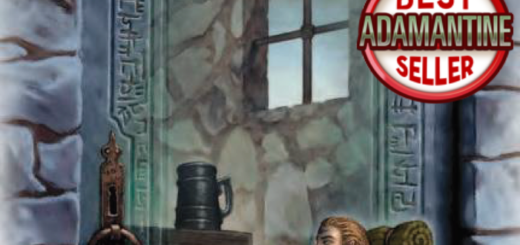D&D Silliness, Flail Snail Treasure Trail

I swear I don’t sit up late at night thinking of ways to make my Dungeon Master grind his teeth to powder. Most of the time, I just stumble upon an odd gem in the books and wonder just how far one could take it. So during an unrelated bit of research for elemental creature types, I came across one of D&D’s weirder monsters, the Flail Snail (Volo’s Guide to Monster, p144). Now I had seen it long before, but to my shame I’d never really given it more than a glance. This time I saw this…
“Left undisturbed, a flail snail moves slowly along the ground, consuming everything on the surface, including rocks, sand, and soil, stopping to relish crystal growths and other large mineral deposits. It leaves behind a shimmering trail that quickly solidifies into a thin layer of a nearly transparent substance inedible to the snail. This glassy residue can be harvested and cut to form window panes of varying clearness. It can also be heated and spun into glass objects of other sorts. Some humanoids make a living from trailing flail snails to collect this glass.”
In addition to several other shortcomings, I’m hopelessly addicted to the topic of history and I know full well that glass has been an incredible commodity up until relatively modern times.
- 10′ movement rate, “large” creature
- 10′ x 10′ trail of snail glass per round
- A round is ~6 seconds
I won’t even acknowledge the possibility of using Haste spells to double the creature’s movement, actions and presumably, metabolism. Best case scenario, assuming our flail snail cooperates and travels along a nice stretch of good quality sand, like a desert or beach, that’s 1,000 square feet a minute and 60,000 square feet an hour!
So what exactly is glass worth? Sadly, I could find no 5e values for glass sheets in core material. I had to go way back 2nd Edition to something called Aurora’s Whole Realm Catalog. This book is a gem in its own right, and one of my all time favorite setting support books. Within its marvelous pages, you can find:
- Glass Sheet, 1 foot square (12″ x 12″), 2gp (p48)
Let’s say that allowing for miscellaneous breakage, variation in quality, and fluctuations in snail digestion, you only get 50% of the optimal glass produced in an hour. That is still 30,000 square feet or, wait for it, 60,000gp of product.
Now, I know what you’re saying, “Flail snails don’t grow on trees, and even if they did, they don’t look like the sort of creature that will placidly roll out glass sheeting for you.” And even the strongest player advocate would agree. Well, except for:
Conjure Elemental (Player’s Handbook, p225), “You call forth an elemental servant. Choose an area of air, earth, fire, or water that fills a 10-foot cube within range. An elemental of challenge rating 5 or lower appropriate to the area you chose appears in an unoccupied space within 10 feet of it.”
(Additionally, there are a few magic items in the Dungeon Master’s Guide which can duplicate this effect).
While the spell does reference the generic elementals as examples (at Challenge Rating 5 each) the fact that it also says “or lower” makes it clear that the other “elemental” creature types are available with this spell (see also the 4th level version, Conjure Minor Elemental, for further support of this).
So would I, as a player, actually do this to my long-suffering DM and generate an incredible fortune? Oh heck no. I can almost guarantee that the cost of top-shelf assassin is much less than 30,000gp and well within the means of the local Glassmaker’s Guild. 😉








